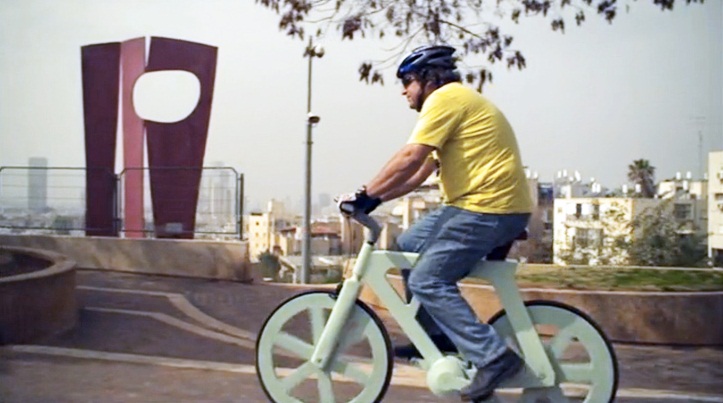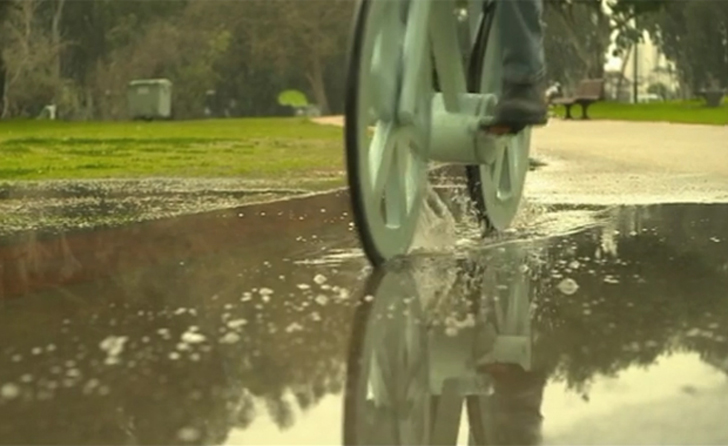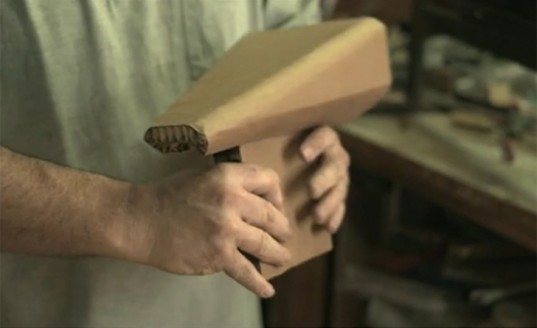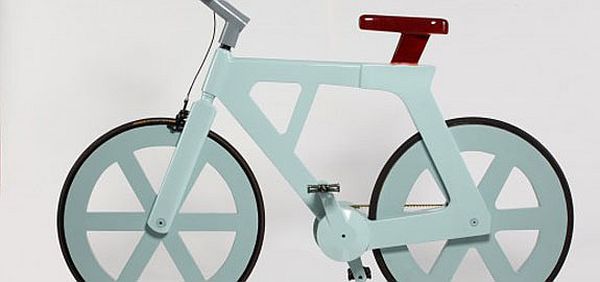Israeli entrepreneur Izhar Gafni has created the most lightweight, renewable fully-functioning bicycle of all time – one made entirely of recycled cardboard and costs only $9.

"It was difficult to explain my ultimate vision with the bikes, which led me to understand that I need to devote more time towards developing a more comfortable design, lighter and more impressive." - Izhar Gafni
With every new bicycle concept released, prototypes will try and become more lightweight at less cost than its predecessors. But if someone told you they could do all of the above from a couple of pieces of cardboard, would you believe it? Probably not, and I wouldn’t blame you. But it would seem that the impossible has been made possible by Israeli bike enthusiast and entrepreneur Izhar Gafni.
Inspired by an inventor who made a canoe out cardboard materials, Gafni has made a fully-functioning professional bicycle made of highly durable recycled cardboard materials that cost him less than ten bucks.
Gafni’s revolutionary bike prototype utilizes recycled cardboard instead of aluminum or metal and is said to be able to accommodate a person up to 300 pounds. Besides having a very low production cost – between $9 to $12 per bike – the prototype is also incredibly durable, eco-friendly, lightweight and easily carried. Because of its low cost, it is also far less likely to be stolen in urban areas as compared to its pricier counterparts.
Gafni initially ran his idea by some engineers who told him that it was nothing more than a fantasy, otherwise impossible. But he didn’t let that stop him. Gafni worked on his concept even harder and continued to develop his ultra-green and incredibly inexpensive project.
 Many work hours and failed designs later, he was able to make an attractive bicycle made entirely out of recycled cardboard that is strong enough to support even the largest of riders, can hold up to humidity and water, and costs about the same as a combo meal at Burger King. But of course, that price tag doesn’t include the huge amount of work Gafni put into it.
Many work hours and failed designs later, he was able to make an attractive bicycle made entirely out of recycled cardboard that is strong enough to support even the largest of riders, can hold up to humidity and water, and costs about the same as a combo meal at Burger King. But of course, that price tag doesn’t include the huge amount of work Gafni put into it.
The bicycle initially went through a staggering amount of prototyping and tweaking. The final product was dipped in a coating material resin solution that gives it a shiny, appealing outer shell and protects it from harsh weather and other common elements. You really couldn’t tell it was cardboard just by looking at it.
“My first prototypes looked like delivery boxes on wheels,” Gafni says. “They were hefty and it didn’t take much imagination to see that they were made of cardboard. When I met with investors it was difficult to explain my ultimate vision with the bikes, which led me to understand that I need to devote more time towards developing a more comfortable design, lighter and more impressive.”
By repeatedly folding the cardboard to give additional sturdiness, the bike frame is able to support an impressive max weight of 300 pounds, and is also able to withstand common natural elements like humidity, dirt, mud, oil and water.
The cardboard bicycle design could realistically make its way into the hands of buyers all around the world. It would be one of the most inexpensive bike solutions on the market, but not likely to hold up as long as a normal bike. But perhaps the best feature is if you bought one and later had it stolen, it wouldn’t be such a big loss.
Although it’s still uncertain whether or not Gafni plans to produce the bike for commercial purposes, the idea is a sustainable and affordable way for a low cost ride. At $9 a bike, retail value for the cardboard bike would be well below $100, making the option of going green and living a healthier lifestyle by choosing to bike over drive is far more likely. Since Gafni painted his own bicycle, I can also see some potential customization options available for the general consumer market. Gafni estimates that the bike could be sold by retailers for around $60 to $90 dollars, cheaper than some of the most inexpensive metal bikes out there.
 Just to be safe, let’s say we just double the price of raw materials which brings us to roughly $24, if we consider the higher end prices. Double it again and you have $48 to a store.
Just to be safe, let’s say we just double the price of raw materials which brings us to roughly $24, if we consider the higher end prices. Double it again and you have $48 to a store.
If Gafni’s calculations about the retail price range are correct, that would be a minimum of a 25% mark up, and as much as an 85.5% margin at the top end.
To sum up, this could be commercially viable for the existing distribution structure, which is an important consideration when bringing a product into the market.
In addition, the prototype characteristics and price combination could be extremely attractive to general consumers. If some economies of manufacturing scale could bring the bike to the lower price, you could have a cheap bike for adults could withstand moisture and also be lightweight. If someone, for any reason, steals the bike (and it’s a long shot anyone would bother with something so cheap), the replacement cost would be negligible. This might be the kind of product that could even appeal to the hospitality industry – a great choice for hotels, inns, and even high class resorts.
In either sense, it’s fantastic to see the progress of sustainable innovation created right in someone’s own backyard, especially because of Gafni’s refusal to accept impossible as an answer.
Check out this video below and see how the $9 Cardboard Bike became a reality and what it looks like in action:




